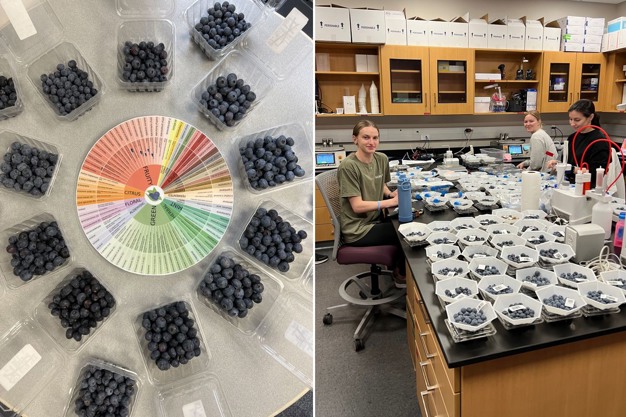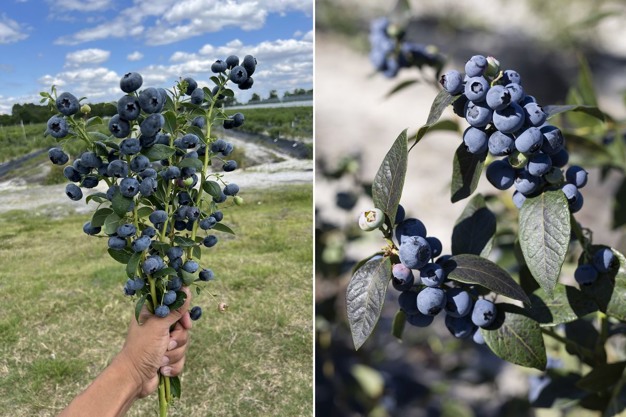The University of Florida (the University) has a long history in blueberry breeding. Back in the 1950s, it started with a program focused on the development of low-chill blueberry varieties and the first southern highbush cultivar was released in 1976. Since then, the University has brought more than 100 southern highbush varieties to market. "In the past, about 95 percent of all southern highbush varieties globally were developed by the University of Florida," says Patricio Munoz, Associate Professor of Blueberry Breeding at the University of Florida. "Today, our market share is lower due to fierce competition in the blueberry breeding space." However, the University still brings to market one to two new varieties annually.
The University's blueberry program has two main goals. "First of all, we want to help producers make money," Munoz said. To the grower, yield is most important. The second goal is to delight the consumer. "Flavor, texture, and appearance are the key traits we look for from a consumer perspective."
How are these goals being achieved? "We use a very data driven methodology in combination with field experiments that are taking place in Florida as well as internationally," Munoz shared. Every single year, 20,000 potential varieties start the development process and after many years of research and trialing, one or two varieties make it to market. "In the past, the entire process from beginning to end used to take 12-15 years. Over time, and with the use of technology it has been cut to seven years." Ultimately, the goal is to develop a new blueberry variety within five to six years, depending on the market.

Predict consumer liking
The University's blueberry breeding program differentiates from other breeding programs through data and technology. "We're able to use 13 years of consumer panel results," Munoz mentioned. All this data is available in a large database. In combination with biochemistry, it allows the research team to predict consumer liking and find the consumer's sweet spots. "Based on that, we have the ability to adjust breeding targets that allow us to achieve our goals."
It's not easy to predict consumer preference years ahead, but when comparing blueberries to other fruits that are a lot more mature, blueberries may follow the same path of development. "The development of blueberries won't be much different from the path other fruits have walked, but blueberries are expected to walk it faster," Munoz mentioned. Just like other fruits, blueberries have increased in size and have become crunchier. What is next? Munoz believes the future for blueberries is in flavor. "Unlike strawberries, bananas, or peaches that have a particular flavor, blueberries don't have a single defined flavor. There is so much variability in blueberries. Once consumers face the potential of different flavors in blueberries, this is expected to become the next new preference." The University has been working in this area for years and brought the first aromatic southern highbush blueberries to the market. However, Munoz is talking flavors beyond that. The first candidates have been presented to marketers and retailers and he believes it may take another two to three years for the varieties to be fully available in the market. "By then, there may be blueberries available with exotic and tropical flavors. We are on the edge of this to become a reality," Munoz said.
Varieties from the University of Florida are grown in Florida, but also licensed in countries outside the U.S., including New Zealand, Australia, Chile, Peru, India, and Morocco. "We have a significant blueberry breeding program and almost every large blueberry producer and marketing company visits our program during the fruit season," Munoz finished.

 For more information:
For more information:
Patricio Munoz
University of Florida
Tel: +1 352-392-1972
[email protected]
https://programs.ifas.ufl.edu/plant-breeding/blueberry/










